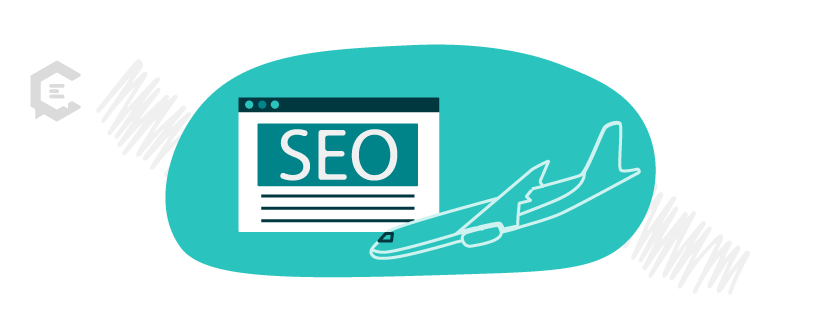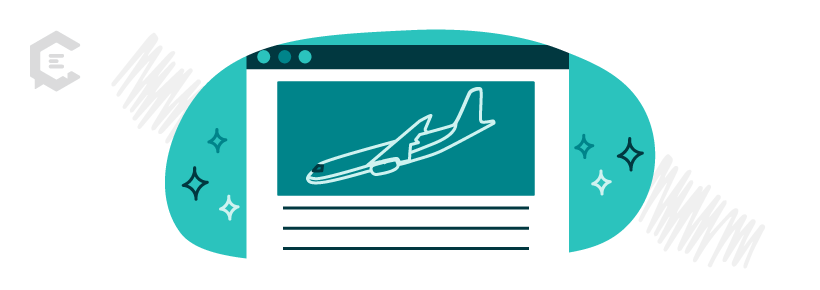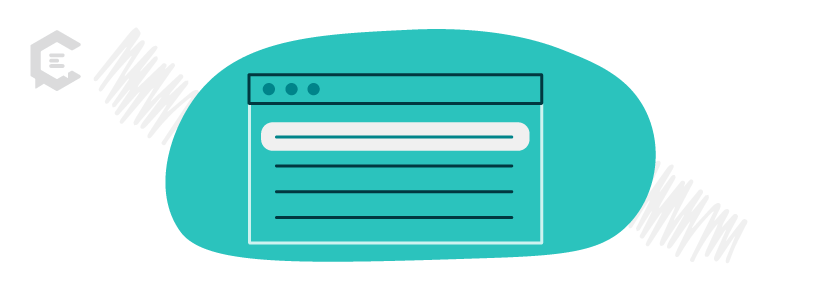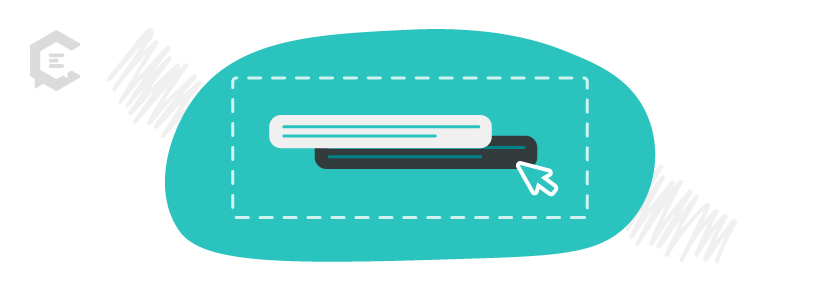A carefully designed landing page can give a powerful and compelling first impression.
On the other hand, it’s also possible to build a landing page that does little more than take up cyberspace. But that’s where SEO landing page best practices come in.
Knowing best practices will help you create a landing page that drives conversions. Hint: You need to include a combination of what search engines want and what your customers need to see.
What is SEO?
SEO, or search engine optimization, involves creating or editing what’s on the webpage to make it more likely to rank higher in search engines.
For example, if you sell software as a service (SaaS) solutions, your SEO would focus on ensuring that your site shows up in searches for terms that include words like “SaaS,” “SaaS for [X business],” [X business] software,” etc.
A search engine, such as Google or Bing, is looking for specific things as it decides which pages to surface when someone enters a search. When you optimize a landing page for SEO, you’re simply giving Google what it wants.
The good news is, in many cases, what search engines like is very close to what people like, too, so the right content can both draw customers and keep them on your landing page.
Do landing pages help with SEO?
Why should you design a landing page for SEO? Because an SEO landing page is one that gives the search algorithms exactly what they want to see.This results in more page visitors, more conversions, and more revenue.
The best landing pages for conversions perform two jobs:
- They attract visitors to your site by giving search engines the content they want to see.
- They provide visitors with a combination of valuable information and further engagement opportunities that connect them with your brand and/or offering.
What is landing page optimization in SEO?
Landing page optimization begins with acknowledging — and accepting — what search engines want to see. While it’s always possible to find a digital shortcut, it’s best to focus on high-quality content.
This is better than trying to figure out how to trick Google into thinking it should recommend your landing page to customers. In the past, people used techniques like keyword stuffing to generate more traffic. While it worked for a little while, it degraded the content Google was recommending.
So, before long, Google not only caught wind of the tactics, but it also started penalizing sites that used them.
Fast-forward to now, and many of the things that Google likes to see, people enjoy as well. Better yet, there are several search engine-pleasing types of content that also make awesome sales tools. By focusing on these, you can rank higher on Google. Here’s how to do it:
SEO landing page best practices
The elements of a high-converting landing page can often work very well with your marketing and lead generation strategy. As a basic rule, your landing page should:
- Be direct. You should get right to the point. It’s also wise to keep the best content above the fold so users can see it when they first pull up the page.
- Be clean. Keep it clutter-free.
- Have consistent, high-quality content. Content consistency matters because it positions your company as a reliable source of information or entertainment.
Regardless of which SEO landing page examples you look at, they all tend to have the above attributes. Below are some SEO landing page best practices, and why they work. You can use them to create landing page templates that you can use again and again.
Choose the right keywords
Keywords are important because they’re a key element of what search engines look for, making them an essential component of landing pages that convert in 2023.
By choosing the right keywords, you make your landing page an option for the kinds of searches your customers are likely to submit.
This applies even if you’re using paid search to generate traffic. But without optimizing your keywords, there’s a good chance Google won’t even consider putting your site on the first, second, or even third page.
This is because Google has bots that scan the internet every time someone enters a search term. If your page doesn’t have anything that either includes that term or is somehow related to it, its algorithms assume your page won’t address the searcher’s query.
For example, suppose a cybersecurity company’s landing page only focused on its philosophy and why they do what they do. It may be a great ambassador for their company’s culture, but Google likely won’t send many people to the page.
For instance, phrases like “customers come first” or “creating a safer internet experience” may not resonate with Google’s algorithms. People looking for cybersecurity services are unlikely to type these phrases, or any related to them, into search engines.
On the other hand, by including specific cybersecurity terms, the landing page may rank higher. For example, you could use the names of common cybersecurity tools, such as firewalls, web application firewalls, or VPNs. You could also use longer keywords that people may search for, such as “cybersecurity for restaurant chain.”
By populating your landing page with the right kinds of keywords, you provide the specific info your customers need to see and the terms Google wants to show them.
Put your keywords in the right places
The key to putting your keywords in the most effective locations is understanding where Google is looking when its bots scan your page.
Here are some page elements that Google checks — and the best places to insert your keywords:
- Meta description. A meta description is like a short byline for your page. It describes what’s on it, and it appears under the search engine results when your page pops up in Google or another engine.
- Title tag. Your title tag is the title of your page. By putting your keywords here, you’re reasserting your page’s relevance to Google.
- Header tags. Headers are the subheadings of your page. You should have one H1, and then H2s and H3s—all the way down to H6s—in order to keep your page well-organized. Keywords within headers show Google that your page is logically constructed around providing customers with the specific thing they’re looking for.
- The file names of images. An image file name tells Google what’s inside the image, and can help it perceive that your page is what people are looking for. For instance, by naming an image of someone driving a boat “tour operator in Belize,” you may appear higher in the searches of tourists considering visiting Belize than you would if the image was named, “person driving boat.”
- The text on your page. By putting keywords naturally within the copy of your landing page, you’re underscoring its relevance to what people are looking for. It’s important to not simply throw them in randomly because Google can identify that as keyword-stuffing and penalize your page by ranking it lower—or not at all.
How to find the best keywords
Identifying effective keywords should be a priority on your landing page SEO checklist because they signal to search engines that your page is a good fit for peoples’ queries.
There are a few different resources online to make it easier to find the best keywords. One popular choice is made by Ahrefs. Their Keywords Explorer provides useful analytical data about each keyword you enter, making it easier to optimize your strategy.
Choose a descriptive URL
Your URL should accurately describe your landing page because search engine bots use the name to help determine what’s actually on the page. Ideally, you want to keep your URL between 50 and 60 characters.
A landing page should complement your website’s navigation structure by starting with a category, such as “landing-page,” and then a very brief description of what’s on the page.
For example, suppose a fictional photographer with the website PerfectPics.com wanted to make a landing page only for their wedding photography services. The entire URL, including the domain, could be PerfectPics.com/landing-page/wedding-photos.
Build up your backlinks
As far as SEO landing page best practices go, backlinks are essential. A backlink is what another site uses to connect its visitors to your page.
In effect, a backlink says to Google, “This company or person trusts my content so much that they’re willing to recommend it to their own visitors.” Google, and other search engines, then follow suit by ranking your page higher.
The best way to get backlinks is to create compelling, helpful, engaging, and accurate content that people naturally want to backlink to. It may help to incorporate:
- Videos
- High-quality images
- Easy-to-understand content
- Infographics
- Recent, relevant statistics
If you’re ready to create your SEO-friendly landing pages, partner with ClearVoice. With an expansive team of seasoned, highly-skilled content creators on your side, you can design landing pages that drive conversions and increase revenue. Talk to a content specialist today.







